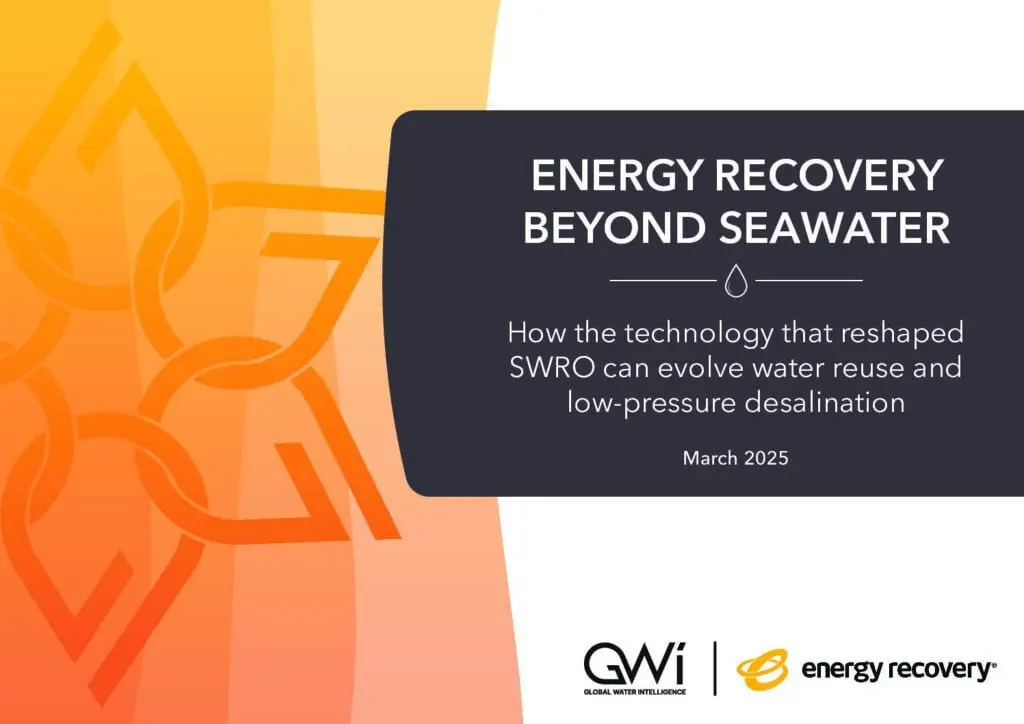As the world faces the hard reality of climate change and ever-worsening water scarcity, the need to leverage unconventional water resources is now greater than ever. Together, desalination and reuse could provide the water we need, but high energy requirements make them costly options. Energy recovery devices (ERDs) offer an answer.
Energy recovery is now endemic to the seawater desalination industry, providing significant reductions to the single largest source of seawater reverse osmosis (SWRO) operating expenses: energy consumption. Today it is a rarity for a large seawater desalination plant to be built without an energy recovery device, with more than 35,000 Pressure Exchanger (PX) ERDs alone deployed worldwide (saving more than $6 billion in energy costs). However, energy recovery has historically been much less common in low-pressure reverse osmosis and wastewater reuse applications.
This white paper presents the advantages and potential growth opportunities of energy recovery in these comparatively untapped markets.
Advantages of Energy Recovery
Today, reverse osmosis is substantially cheaper to build and operate than it was two decades ago, but it remains a comparatively expensive solution for water supply. High energy requirements are responsible for much of this, accounting for up to a third of total seawater desalination plant costs. Recovering waste energy from a plant’s brine stream offers an effective way to reduce net energy requirements and minimize operating expenses. This approach allows for energy consumption to be cut by up to 60% and is now the norm in seawater desalination.
In this paper you will find:
- The advantages of energy recovery
- Bringing value to low-pressure reverse osmosis
- Case study: Industrial osmosis plant
- Case study: Municipal groundwater treatment plant
- The reuse opportunity
- Regional breakdown
- Global benefits
- Obstacles to implementation
